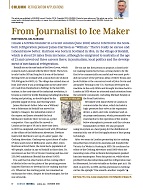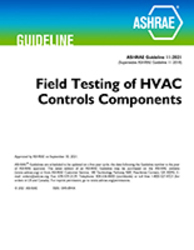This manuscript concerns a case study involving moisture performance of a contemporary wood frame house over a series of heating seasons in Madison, Wisconsin. Over most of the heating seasons, the building was humidified to levels as calculated by methodology outlined in section 4.3.2 of Proposed ASHRAE Standard 160, Design Criteria for Moisture Control in Buildings.
Over the first two heating seasons following construction, indoor humidity levels moderately lower than design conditions were attained, even though the house was neither occupied nor humidified. The moisture source was evidently wet soil around the building foundation, a condition probably associated with roof runoff deposited near the foundation during construction. Over the third, fourth and fifth heating seasons the house was brought to design indoor humidity values with less than anticipated moisture release by humidifiers. Throughout the study, the indoor humidity levels resulted in some window condensation in cold weather, but the condensation was restricted to glass panes. Attic spaces remained dry. Painted wood-based sidings showed no staining, buckling, warping or finish failure. Stucco cladding showed cracking that, although minor, would be consistent with seasonal moisture accumulation in the sheathing. Substantial seasonal moisture accumulation was measured in the sheathing of exterior walls that did not incorporate an interior vapor retarder. Vapor retarding interior wall paint mitigated moisture accumulation, but nonetheless permitted seasonal peak sheathing moisture contents to exceed 16%. Seasonal moisture accumulation was greater in walls clad with plywood panel siding or stucco than it was in walls clad with strandboard lap siding or brick veneer. With lap siding, an air gap between siding and sheathing, even though not intentionally ventilated, reduced seasonal moisture accumulation and aided in springtime dissipation of moisture.
Presented at Thermal Performance of Exterior Envelopes of Whole Buildings X – December 2007
Units: Dual
Citation: Thermal Performance of Exterior Envelopes of Whole Buildings X
Product Details
- Published:
- 2008
- Number of Pages:
- 14
- File Size:
- 1 file , 2.8 MB
- Product Code(s):
- D-BldgsX72


